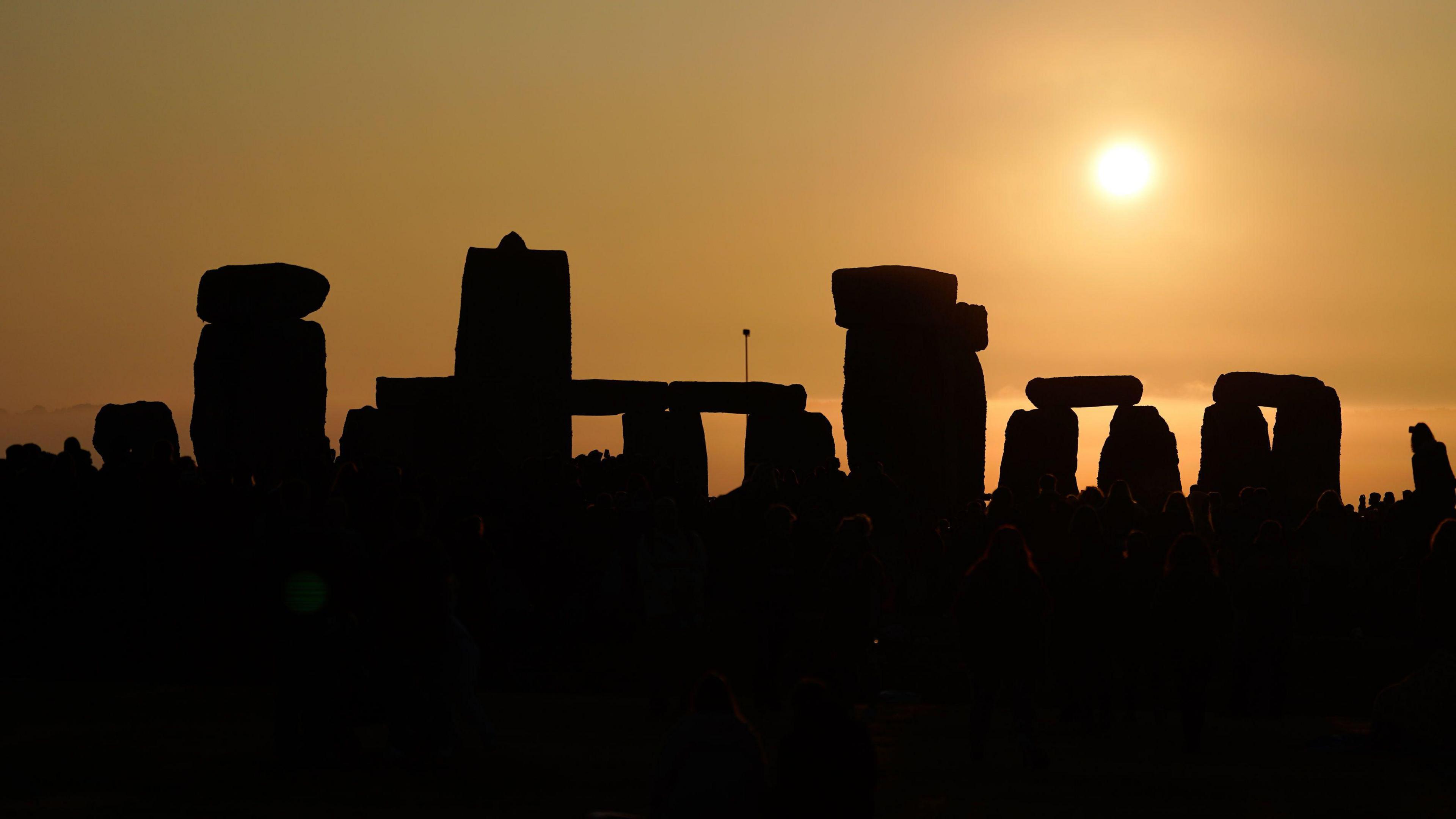Summer solstice: All you need to know

Every year people gather at Stonehenge on Salisbury Plain to celebrate the summer solstice
- Published
For some it marks the start of summer and looking forward to warmer days. For others, a celebration at dawn.
The summer solstice is the longest day of the year, meaning the day of the year that has the most hours of sunlight.
Our planet does not spin on a vertical axis - it is tilted. This means the amount of sunlight that reaches different regions of the Earth changes during the year as it orbits the Sun.
Without this tilt, although we would get weather, we wouldn't get seasons as there would be an equal amount of daylight all year.
For half the year the northern half of the Earth is tilted towards the sun. On the summer solstice the northern hemisphere is most tilted towards the Sun. The Sun will be directly overhead at the Tropic of Cancer.
This year the summer solstice in the northern hemisphere falls on Thursday 20 June.
The word solstice comes from the fact the Sun appears to stand still - from the Latin words sol (sun) and sistere (to stand still).
Matt Taylor explains the tilt of the Earth to pupils on 91Čȱ¬ Bitesize
Why does the date change?
The solstice always occurs between 20 and 22 June, and during a leap year (such as 2024) it always falls on 20 June.
The exact date shifts slightly each year because the calendar year doesn't match exactly the time it takes the Earth to orbit the Sun.
The calendar is approximately a quarter of a day short, which is why we have leap years, to bring the calendar back in line with the Earth's orbit.
Daylight hours vary significantly across the UK
How much daylight will there be?
Because of the tilt of the Earth the period of daylight will be longer at higher latitudes.
Around this time, areas towards the North Pole experience "midnight sun". And across the Arctic Circle, down to a latitude of 23.5 degrees from the North Pole (matching the tilt of the earth), the Sun does not set at all.
But remember, at the same time, the southern hemisphere will be tilted away from the Sun and experiencing a winter solstice or shortest day.
Is this the start of summer?
When most people think of the first day of summer they are referring to the astronomical summer – the summer solstice.
However, meteorologists always class our northern hemisphere summer as starting on 1 June and ending on 31 August. The meteorological seasons are split into four periods made up of three months each, which makes it easier to compare seasonal statistics.
Meteorologically, we are nearly a month into summer. Astronomically, the summer has only just begun.
Is it going to be hotter?
Just because there is more daylight at the summer solstice it doesn’t mean it will necessarily be hot.
We are still at the whim of the weather patterns that affect our shores.
Our hottest weather tends to be later in the summer as more heat has been built up in the air and the ground. The UK's highest temperature of 40.3 Celsius was recorded a month after the solstice in the heatwave of July 2022.
Early June was disappointingly cool, but recently it has been warmer and cheered us up a bit. Is there rain on the way to dampen our spirits or is it going to get hotter? Our monthly outlook will tell you what's in store.
- Published21 December 2023